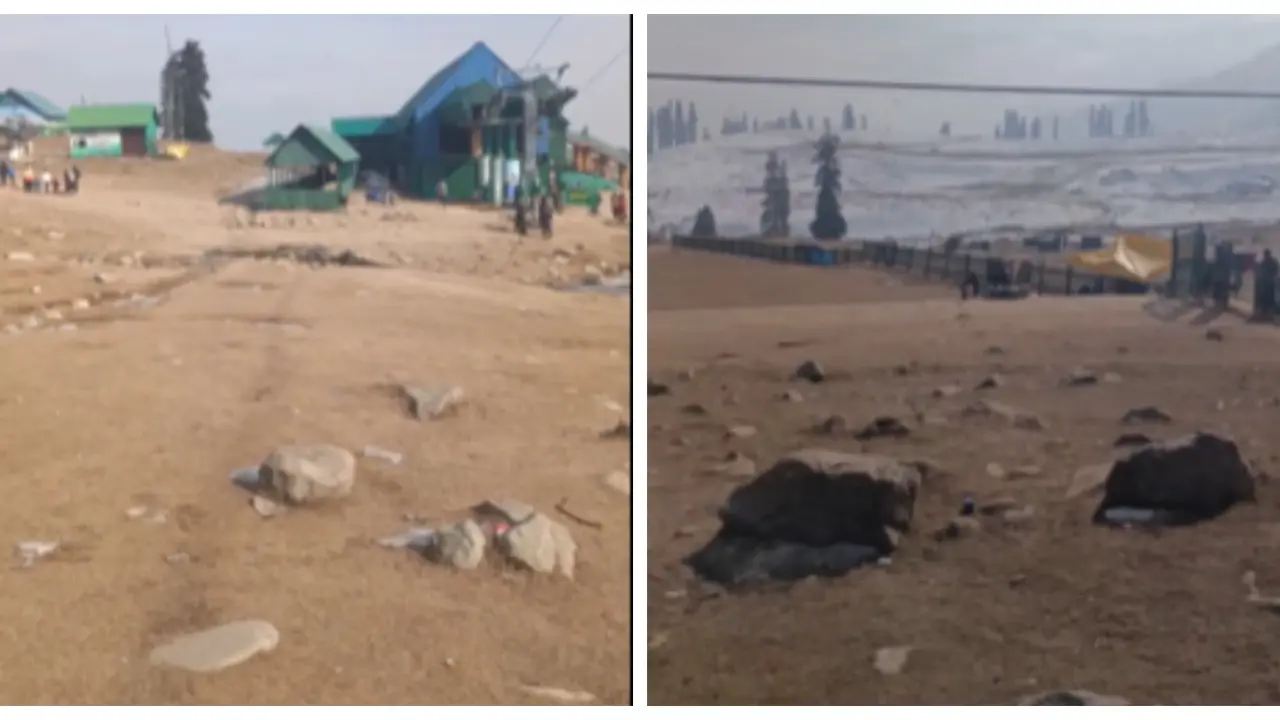Updated 17 January 2024 at 17:25 IST
El Nino Woes Worsen: 79% Rainfall Deficit Puts Kashmir at Risk of Prolonged Drought
The impact on the world-famous ski resort Gulmarg is evident, with the once snow-covered slopes now barren.
- Deep Reportage News
- 3 min read

Jammu & Kashmir : Srinagar: Kashmir's lifeline, the Jhelum is steadily shrinking this year. Jhelum River, a lifeline for the region, has witnessed a significant drop in water levels, reaching alarming lows not seen in recent times. Kashmir Valley is in the clutches of a prolonged dry spell, further intensified by the influence of the El Nino phenomenon. The dry spell has cast a shadow over the region, as vital water bodies in the Valley steadily reducing, posing a grave threat to livelihood.
Officials and experts are expressing serious concerns about the potential severity of an impending water crisis. Chief Engineer of the Irrigation and Flood Control Department, Naresh Kumar, warns that if the dry spell persists, discussions with the agricultural sector may be imperative to consider altering traditional farming patterns.
“The impact is not yet felt as our irrigation season has not commenced. If the dry spell persists, discussions with the agricultural sector may be necessary to consider altering agricultural patterns in the Valley,” warned Naresh Kumar.
The absence of snow and rain, coupled with a 79 percent rainfall deficit in December 2023 and an unprecedented 100 percent deficit in January so far has put tremendous stress on the water resources of the valley.
Advertisement
El Nino, an atmospheric anomaly, known by the Spanish term 'the Christ Child,' is causing a warming of the ocean surface in the central and eastern tropical Pacific Ocean, disrupting normal weather patterns on a global scale, leading
El Nino’s impact on weather patterns is felt globally, with the Kashmir Valley also facing the imoact. The customary easterly winds along the equator, responsible for maintaining a stable climate, have weakened or even reversed direction to westerly winds. The irregular recurrence of El Nino, varying from two years to a decade, makes each event unique, with no two being precisely alike.
Advertisement
Meteorological Department here attributes the prolonged dry spell to a 75 percent rainfall deficit through December and January, stating that the absence of precipitation is a consequence of the warming of sea surface temperatures, disrupting global weather patterns, and leading to reduced rainfall and snowfall in the Himalayan region.
The dwindling water levels not only affect immediate water availability for agriculture, horticulture and power production but also pose long-term threats to groundwater recharge and overall glacier health. The impact on the world-famous ski resort Gulmarg is evident, with the once snow-covered slopes now barren.
Meteorological Department here predicting no major wet spell in the near future and the dry spell expected to persist until at least January 24, Kashmir faces a challenging period ahead, requiring collaborative efforts to mitigate the impacts of the ongoing water crisis.
“We observe with concern the prolonged dry spell and the impact of the El Niño phenomenon on the Kashmir Valley. The absence of significant rainfall and snowfall poses a critical challenge to water resources. Forecast indicates a continued dry spell until at least January 24. Now, more than ever, collaboration is paramount. Let us join hands in water conservation efforts,” said Head , Meteorological Center in Leh, Sonam Lotus.
Published By : Shweta Singh
Published On: 17 January 2024 at 17:25 IST
